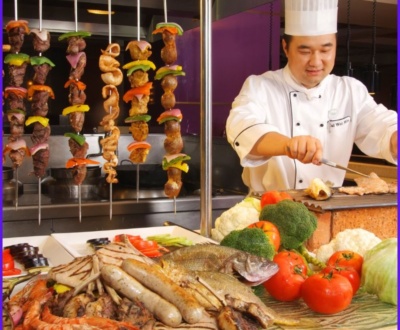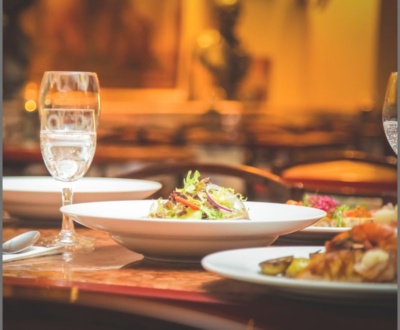Why SEO is important for restaurant?
today’s digital age, having an online presence is crucial for businesses, especially for restaurants .In this blog, we explore how SEO is important in digital marketing for Restaurants. Search Engine Optimization (SEO) plays a pivotal role in ensuring that your restaurant stands out in a crowded online marketplace. But what exactly is SEO, and how can it benefit your restaurant? Let’s dive in!
Understanding SEO
Search Engine Optimization (SEO) refers to the process of enhancing a website’s visibility in search engine results pages (SERPs). When potential customers search for restaurants in their area, they typically rely on search engines like Google to guide them. SEO encompasses various techniques and strategies designed to improve your website’s ranking, driving more organic traffic and ultimately leading to increased reservations or orders.
Why SEO is Important for Restaurant?
- Increased Online Visibility: Most consumers use search engines to find local dining options. Effective SEO ensures that your restaurant appears at the top of search results when potential customers search for terms like “best Italian restaurant near me” or “sushi delivery in [city].”
- Targeted Traffic: SEO helps attract visitors actively searching for what you offer. This targeted traffic is more likely to convert into reservations, takeout orders, or visits to your restaurant.
- Enhanced User Experience: Good SEO practices involve optimizing your website’s structure, speed, and mobile-friendliness. These factors not only improve your search ranking but also enhance the user experience, making it easier for potential customers to navigate your site.
- Building Trust and Credibility: Websites that rank higher in search results are often perceived as more trustworthy. By implementing effective SEO strategies, you can establish your restaurant as a credible choice for diners.
- Cost-Effective Marketing: Compared to paid advertising, organic traffic driven by SEO can be more cost-effective in the long run. While it may take time to see results, the ongoing benefits of good SEO can lead to sustainable growth without continuous advertising expenses.
. Showcasing Unique Offerings
- Content Marketing: SEO allows you to create and promote content that highlights your restaurant’s unique offerings, such as special dishes, seasonal menus, or events. This not only helps with SEO but also keeps potential customers engaged and informed about what you have to offer.
. Staying Competitive
- Outpacing Competitors: Many restaurants are investing in SEO as part of their digital marketing strategies. If you neglect SEO, you risk falling behind competitors who are actively optimizing their online presence. Staying ahead in search rankings can give you a significant edge in a competitive market.
. Measuring Success and Adjusting Strategies
- Data-Driven Decisions: SEO allows you to track various metrics (like traffic, bounce rates, and conversions) through tools like Google Analytics. This data provides valuable insights into your audience’s behavior, enabling you to refine your marketing strategies and improve your online presence continuously.
Key SEO Strategies for Restaurants
- Keyword Research: Identify relevant keywords that potential customers might use to find restaurants like yours. Focus on long-tail keywords, which are more specific phrases that indicate a higher intent to dine (e.g., “vegan brunch in downtown”).
- Optimize Your Website: Ensure your website is user-friendly, mobile-responsive, and fast-loading. Include your keywords naturally in your website’s content, meta descriptions, and image alt tags.
- Local SEO: Optimize for local search by claiming your Google My Business listing. Ensure your restaurant’s name, address, and phone number (NAP) are consistent across all platforms. Encourage satisfied customers to leave positive reviews, which can boost your visibility and reputation.
- Quality Content: Create engaging content that showcases your restaurant’s unique offerings, such as blog posts about seasonal menu changes, recipes, or events. This not only helps with SEO but also keeps your audience engaged.
- Social Media Integration: Leverage social media to promote your restaurant and drive traffic to your website. Share high-quality images of your dishes, engage with customers, and encourage them to share their experiences.
- Backlinks: Gain backlinks from reputable websites and local food bloggers. These links signal to search engines that your website is credible and can improve your ranking.
Measuring SEO Success
To determine the effectiveness of your SEO efforts, use tools like Google Analytics and Google Search Console. Monitor key metrics such as organic traffic, bounce rates, and conversion rates. Adjust your strategies based on what the data reveals to continuously improve your SEO performance.
1. Organic Traffic
- What to Measure: Monitor the number of visitors coming to your website from organic search results. This metric gives you a clear picture of how well your SEO strategies are attracting users.
- How to Measure: Use tools like Google Analytics to track organic traffic. Look for the “Acquisition” section to see how many users are coming from search engines.
2. Keyword Rankings
- What to Measure: Keep track of the rankings for the keywords you are targeting. Higher rankings typically lead to more traffic.
- How to Measure: Use tools like SEMrush, Ahrefs, or Moz to monitor your keyword rankings over time. These tools can help you identify which keywords are driving traffic and which need more attention.
3. Click-Through Rate (CTR)
- What to Measure: The CTR indicates the percentage of users who click on your website link after seeing it in search results. A higher CTR usually suggests that your title tags and meta descriptions are compelling.
- How to Measure: Use Google Search Console to check your CTR for specific keywords and pages. Analyze which pages have a high number of impressions but low clicks to optimize their content.
4. Bounce Rate
- What to Measure: The bounce rate shows the percentage of visitors who leave your site after viewing only one page. A high bounce rate may indicate that users aren’t finding what they expect or that your content isn’t engaging enough.
- How to Measure: Use Google Analytics to check the bounce rate for individual pages. Aim for a lower bounce rate, which suggests visitors are engaging with your content.
5. Conversion Rate
- What to Measure: The conversion rate tracks how many visitors complete a desired action, such as making a reservation, signing up for a newsletter, or ordering food online.
- How to Measure: Set up goals in Google Analytics to track conversions. This will allow you to analyze how effective your website is at converting visitors into customers.
6. Page Load Time
- What to Measure: The time it takes for your website to load can significantly impact user experience and SEO. Faster-loading pages tend to rank better and have lower bounce rates.
- How to Measure: Use tools like Google PageSpeed Insights or GTmetrix to analyze your site’s loading speed and identify areas for improvement.
7. Backlinks
- What to Measure: The number and quality of backlinks pointing to your website can impact your authority and rankings. Quality backlinks from reputable sites signal to search engines that your content is valuable.
- How to Measure: Use tools like Ahrefs or Moz to track your backlink profile. Analyze which backlinks are driving traffic and contributing to your site’s authority.
8. User Engagement Metrics
- What to Measure: Metrics like average session duration and pages per session can provide insight into how users interact with your website.
- How to Measure: Google Analytics can help you analyze these metrics. Longer session durations and more pages per session often indicate that users find your content valuable.
9. Local SEO Performance
- What to Measure: For restaurants, local SEO metrics are essential. Track how well your restaurant ranks for local keywords and how often your business appears in local searches.
- How to Measure: Monitor your Google My Business insights to see how users find your listing (via direct searches or discovery) and what actions they take, such as calls or visits to your website.
10. Mobile Responsiveness
- What to Measure: With more users accessing websites via mobile devices, it’s crucial to ensure that your site performs well on smartphones and tablets.
- How to Measure: Use Google Mobile-Friendly Test to check if your site is optimized for mobile devices. Analyze mobile traffic in Google Analytics to see how many users visit your site from mobile devices.
Conclusion
Incorporating SEO into your restaurant’s digital marketing strategy is essential for staying competitive in today’s online landscape.

“Put your restaurant on the map! 🌟 Unlock the power of SEO to attract diners, increase visibility, and grow your business online. 🍽️📱”
More from our blog
See all postsRecent Posts
- Benefits of Digital Menu Board(step by step guide for restaurant) October 12, 2024
- Why SEO is important for Restaurant? October 12, 2024
- How do I Write a Social Media Plan Proposal? October 12, 2024








